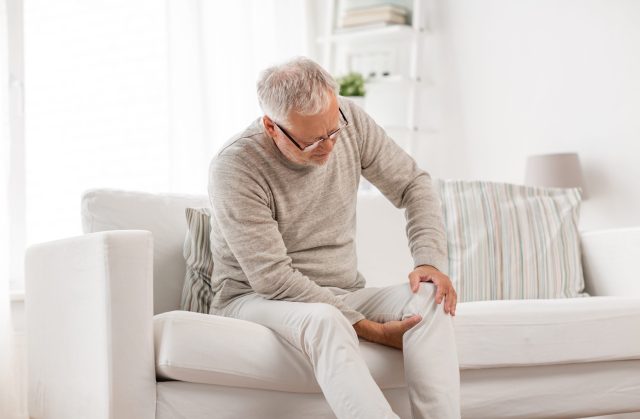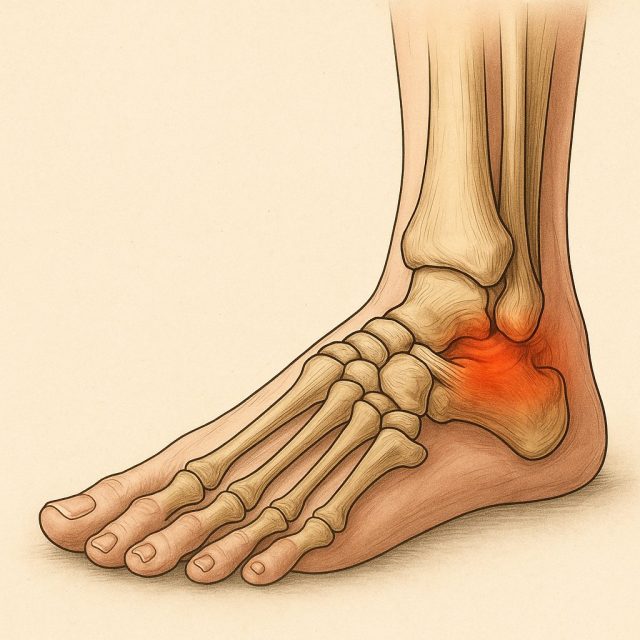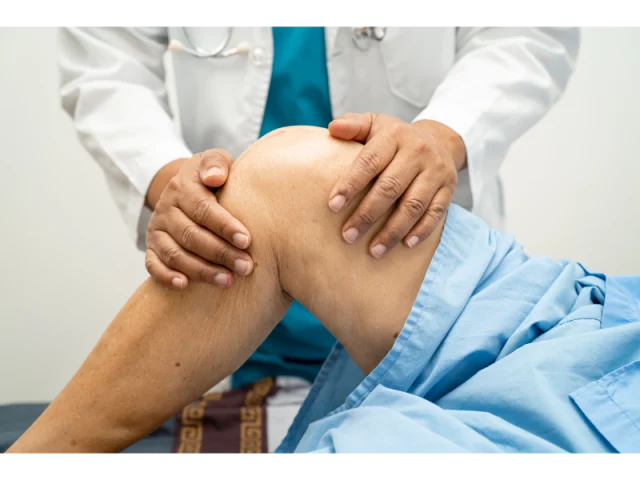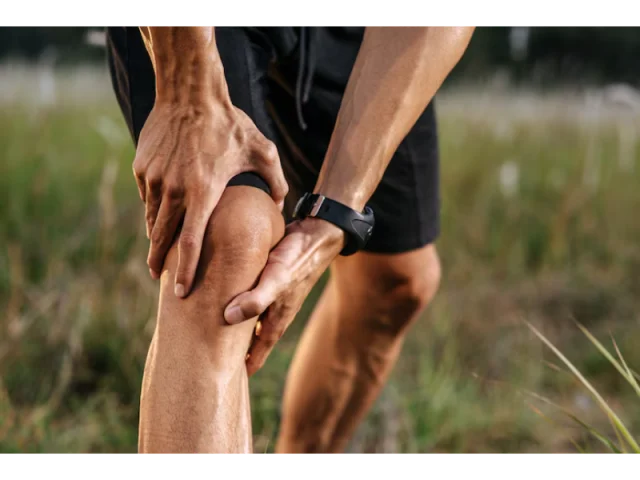With the arrival of cold weather, joint pain negatively affects the daily lives of many people. This pain is especially noticeable in mobile joints, such as the knees, shoulders, waist, and neck. These joints become more sensitive because of the low temperatures. This leads to increased pain in individuals with joint diseases. So, how does cold weather affect joint health and what can be done to make this process more comfortable? With the expert opinions of Dr. Özgür Oktay Nar, we discuss in detail in this article what you are curious about joint pain.
Table of Contents
- Cream for Muscle and Joint Pain
- Why Does Cold Weather Trigger Joint Pain?
- Cream for Muscle and Joint Pain
- Risk Factors for Joint Pain in Cold Weather
- Daily Routine Recommendations for Joint Health in Cold Weather
- 7 Effective Ways to Reduce Joint Pain in Cold Weather
- Nutrition and Lifestyle Recommendations to Prevent Joint Pain
- Frequently Asked Questions (FAQ)
- Conclusion
Cream for Muscle and Joint Pain
Muscle and joint pain can result from intense physical activity, overexertion, aging, or certain rheumatic conditions. Topical creams offer an effective solution for relieving such discomfort. These creams contain muscle relaxants, anti-inflammatory agents, and pain relievers. They provide targeted relief by acting directly on the affected area.
Ingredients such as menthol, camphor, arnica, capsaicin, and nonsteroidal anti-inflammatory drugs (NSAIDs) help relax muscles and improve circulation, thereby reducing pain. Before applying the cream, the area should be clean and dry. It should be gently massaged into the skin according to the usage instructions.
When used regularly, these creams can offer significant relief, especially in cases of recurring muscle fatigue and mild rheumatic discomfort. However, in cases of severe or chronic pain, medical advice should be sought. It is strongly recommended to consult a medical professional.
Why Does Cold Weather Trigger Joint Pain?
Joint pain increases in cold weather. Low temperatures affect the joint fluid, causing it to thicken. This leads to stiffness and limitation of movement in the joints. Cold weather sensitizes nerve endings. This triggers muscle spasms. Muscle spasms cause the muscles around the joints to contract more. As a result, the pain is exacerbated.
- Slowing of blood circulation and its effect on joint health: Cold air constricts blood vessels, which slows down circulation. This reduced blood flow can lead to stiffness in the joints and increased discomfort.
This causes the joints to receive less oxygen and nutrients, leading to increased pain. - Concentration of Joint Fluid and Limitation of Movement: Joint fluid is essential for the healthy functioning of the joints. This fluid allows joint movements to take place comfortably.
- Muscle Tension and Effects on Pain: Low temperatures cause muscles to become stiffer. This increases the tension around the joints. The tightening of the muscles increases the load on the joints, leading to worsening pain.

Risk Factors for Joint Pain in Cold Weather
Joint pain in cold weather is not the same for everyone. Some individuals are more prone to joint pain due to certain risk factors. It is important to know these factors in order to take preventive measures.
- Advanced Age and Weakening of Joint Structure: As age progresses, joint cartilages naturally begin to wear down. This causes pain complaints to become more common in older people in cold weather.
- Rheumatic Diseases and Increased Symptoms: People with joint diseases such as rheumatoid arthritis and osteoarthritis may experience more pain in cold weather.
- Lack of Physical Activity and Joint Health: Joint mobility decreases over time in individuals who do not exercise regularly. Without sufficient exercise, the muscles and joints are not adequately strengthened or maintained. As a consequence, the joints become stiffer and less able to move freely. This stiffness becomes even more pronounced in cold weather, causing the pain to intensify.
Daily Routine Recommendations for Joint Health in Cold Weather
Reducing joint pain in cold weather requires not only periodic measures but also changes in daily living habits. Starting the day with short stretching exercises in the morning, moving at regular intervals during the day and taking a hot shower in the evening are very beneficial for joint health. In addition, proper sitting posture in the working environment, avoiding prolonged periods of inactivity and drinking enough fluids during the day are also important steps to be added to the daily routine.
7 Effective Ways to Reduce Joint Pain in Cold Weather
In order to protect your joint health and reduce pain in cold weather conditions, it will be useful to pay attention to the following recommendations:
- Keep Joints Warm and Dress in Layers: Keeping your joints warm in cold weather can help reduce pain by improving blood circulation. You can also use thermal clothing and supports such as knee braces.
- Maintain Joint Flexibility with Regular Exercise: Light walks, yoga and stretching exercises keep joints more active. Regular movement is very important for joint health.
- Support Your Joint Health by Paying Attention to Nutrition: Consuming foods rich in omega-3 fatty acids and vitamin D helps reduce joint inflammation. This contributes to pain relief by decreasing inflammation in the joints.

- Take advantage of hot compresses and baths: Using a hot water bottle or a hot bath, especially on painful areas, relaxes the muscles and reduces joint pain.
- Support Joint Fluid by Drinking Plenty of Water: Maintaining the body’s moisture balance protects joint health by preventing the condensation of joint fluid.
- Get Professional Support for Prolonged Pain: If your joint pain is persistent, it is important to take the necessary measures as soon as possible. This may include consulting with a healthcare professional to identify the underlying cause. One of the best steps is to consult an orthopedic specialist. They can assess your condition and recommend appropriate treatments to manage the pain.
Nutrition and Lifestyle Recommendations to Prevent Joint Pain
A healthy diet and lifestyle play a big role in reducing joint pain. You can pay attention to the following recommendations to protect your joint health:
- Eat foods rich in omega-3s: Foods such as fish, walnuts and flaxseed support joint health by reducing joint inflammation.
- Meet Your Calcium and Vitamin D Needs: Dairy products, green leafy vegetables, and getting enough sunlight are all important for joint health. Dairy products provide essential calcium, which strengthens bones and supports joint function.
- Reduce Inflammation with Anti-inflammatory Foods: Antioxidant foods such as turmeric, ginger, and green tea play a crucial role in preventing joint inflammation. These foods have natural anti-inflammatory properties that help reduce swelling and discomfort in the joints.
- Get into the Habit of Regular and Quality Sleep: A quality sleep has a positive effect on joint health. It allows the body to renew itself, promoting tissue repair and recovery. This process helps maintain the flexibility and strength of the joints. Additionally, adequate rest reduces inflammation and supports overall joint function.

Frequently Asked Questions (FAQ)
Why does cold weather increase joint pain?
Cold air constricts blood vessels and slows down blood circulation. It also causes joint fluid to thicken and muscles to stiffen. This leads to stiffness and pain in the joints.
Which foods should be consumed to reduce joint pain?
Consuming fish, walnuts, and flaxseeds rich in omega-3 supports joint health. Dairy products and green leafy vegetables containing vitamin D are also beneficial.
Which exercises can be done in cold weather?
Light walks, stretching, pilates and low-impact water exercises help maintain joint mobility.
What are natural methods for relieving joint pain?
Massages with herbal oils, hot compresses, omega-3 and anti-inflammatory foods can naturally relieve joint pain.
Which vitamins are important for joint health?
Vitamin D, calcium, omega-3 fatty acids, and vitamin C are important for joint health. These nutrients support and protect the joints in various ways.
Which areas are more prone to joint pain in cold weather?
Commonly used joints such as knees, elbows, shoulders and wrists are more painful in cold weather.
How does regular exercise prevent joint pain?
Regular exercise helps to strengthen the muscles around the joints and keep them flexible. This reduces joint pain.
When should you consult a doctor for joint pain?
If the pain persists for a long time, you should be careful. If swelling and redness occur in the joints, this should be taken seriously. In addition, if there is restriction of movement, an orthopedic specialist should be consulted immediately.
What lifestyle changes should be made to protect joint health in cold weather?
A healthy diet is important to support joint health. Regular exercise also helps to keep joints stronger. Adequate and quality sleep is also an important lifestyle habit that supports joint health.
Conclusion
Joint pain in cold weather is a common health problem. It negatively affects the quality of life for many people, making daily activities more difficult. Especially cold weather conditions cause joint fluid to thicken. At the same time, blood circulation slows down and muscles stiffen. This increases the severity of pain. It also restricts mobility, making daily life activities difficult. It is possible to prevent this problem. To maintain joint health, it is necessary to take the right precautions. Additionally, making lifestyle changes is important for long-term joint care.
One of the most effective ways to reduce joint pain in cold weather is to keep the joints warm. This helps protect the joints and minimize discomfort. Keeping the joint areas protected from the cold helps minimize discomfort. Regular exercise also supports joint health. It is also important to eat a healthy and balanced diet. Drinking plenty of water helps keep joint fluid healthy. When necessary, applying hot compresses can help relieve pain. These methods both make the joints more flexible and help relieve pain. It is especially important to protect frequently used joints.
As a result, joint health is extremely important in maintaining quality of life. To lead a healthy life, you need to take precautions against joint pain. You should take care to maintain joint health. This will help you avoid losing your mobility. Maintaining joint health is essential to enjoy life and lead an active life. It is important to protect your joint health, especially in cold weather conditions. To minimize pain, you can follow the recommendations of Dr. Özgür Oktay Nar. In this way, you will improve your quality of life. You will also live a more comfortable life in cold weather.























 Youtube Videos
Youtube Videos



